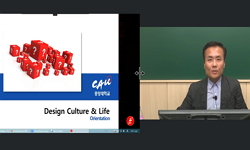다도는 찻잎을 따는 것부터 달여 마시는 것까지 그 모든 과정을 아우르는 것으로, 폼과 마음을 수련하여 덕을 쌓는 행위을 말한다. 일본 다도는 ‘와비’사상으로 표현할 수 있고 다도의 절...
http://chineseinput.net/에서 pinyin(병음)방식으로 중국어를 변환할 수 있습니다.
변환된 중국어를 복사하여 사용하시면 됩니다.
- 中文 을 입력하시려면 zhongwen을 입력하시고 space를누르시면됩니다.
- 北京 을 입력하시려면 beijing을 입력하시고 space를 누르시면 됩니다.
문화적 요소를 통해 본 다도 관련 디자인 = Design on Dado Through Considering Cultural Factor - Comparation of Japanese and Korean
한글로보기https://www.riss.kr/link?id=A60171599
- 저자
- 발행기관
- 학술지명
- 권호사항
-
발행연도
2009
-
작성언어
-
- 주제어
-
KDC
600
-
자료형태
학술저널
-
수록면
14-23(10쪽)
- 제공처
-
0
상세조회 -
0
다운로드
부가정보
국문 초록 (Abstract)
다도는 찻잎을 따는 것부터 달여 마시는 것까지 그 모든 과정을 아우르는 것으로, 폼과 마음을 수련하여 덕을 쌓는 행위을 말한다. 일본 다도는 ‘와비’사상으로 표현할 수 있고 다도의 절차, 다실, 다기 등이 발달되어 있다. 자연스러움과 균형미는 한국의 미를 설명하는 데 가장 많이 등장하는 단어 중의 하나일 것이다. 그러한 한국미가 다도에서 또한 잘 드러나 있다. 본 연구에서는 사상, 가치, 인식 등의 문화적 요소를 통해 다도와 관련된 디자인을 살펴보았고 한국과 일본을 연구대상으로 한다. 한국의 경우 불가, 유가, 도가 사상의 영향을 받았고 일본의 사상은 ‘화’, ‘경’, ‘청’, ‘적’으로 정리할 수 있다. 다도 process를 살펴보면 한국의 경우 차가 맛있는 온도를 위해 차를 식히는 과정이 있다. 한국은 균형미, 일본은 불균형미를 추구한다. 한국은 자연의 그대로 조작 없는 아름다움을 균형미라고 일컬었고 일본의 불균형미는 ‘완벽한 형태를 취하지 않은 것’이다. 정리되거나 완전하지 않은 상태로 이것이 다도에서는 좀 더 적극적으로 불균형미가 되었다. 이는 비대칭적이고 불균형한 것에서 오는 아름다움을 더 값지게 여기는 ‘와비’의 정신이기도 하다. 그러한 양국의 미의식은 공간에서도 반영된다. 일본과 한국의 다도에 쓰이는 주요 다도구 역시 그 나라의 process에 따라 달라지며, 미의식을 반영한다. 한국, 일본을 포함한 동양의 다도 문화가 지니는 미적(美的) 가치와 디자인적 요소를 더 심도 있게 연구하여 동양의 다도 문화와 관련된 디자인 제반 영역에 활용 및 적용할 수 있는 가능성에 대한 지속적인 연구가 필요하다.
다국어 초록 (Multilingual Abstract)
A tea ceremony is process which is from picking the tea leaves off to making and drinking the tea and cultivating the virtue by practicing how to make mind and body clean. The Japanese tea ceremony is represented as Wabi and has developed steps of th...
A tea ceremony is process which is from picking the tea leaves off to making and drinking the tea and
cultivating the virtue by practicing how to make mind and body clean. The Japanese tea ceremony is represented as Wabi and has developed steps of the tea ceremony, a teahouse and tea utensils. The natural and beauty of balance are one of the most often used words which explain the beauty of korea. The beauty of korea appear in the tea ceremony too. At this study, I study a design which is related with the tea ceremony by the culture factors like an ideology, value, recognition and so on. The object of this study is korean and japanese tea ceremony’s design. The Korean tea ceremony is influenced by the Buddhism, a Confucian and Daoist Philosophy The Japanese tea ceremony is influenced by the Wha, Kyung, Chung and Juck. The Korean tea ceremony has the process of cooling the tea off lor suitable temperature which make tea delicious. The Korea tea ceremony pursues the beauty of balance, but the Japanese tea ceremony pursues the beauty of imbalance. In the Korea, the beauty of natural which is not influenced by artificiality is called the beauty of balance. In the Japan, the beauty of the unfinished situation and imperfect is called the beauty of imbalance. And this is the origin of Wabi. These esthetic senses of Korea and Japan is reflected in space. And the main tea utensils which is used in Korea or Japan are also different by their process. We need the continuous study about the possibility of applying and using to a field of design through deep investigate on aesthetic value and design factor of oriental Dado cuIture include Korea and Japan.
목차 (Table of Contents)
- 요약
- Abstract
- 1. 서론
- 2. 문화적 요소(Cultural Factors)
- 3. 다도 공간에서의 문화적 요소
- 요약
- Abstract
- 1. 서론
- 2. 문화적 요소(Cultural Factors)
- 3. 다도 공간에서의 문화적 요소
- 4. 다도 관련 디자인과 미의식
- 5. 결론
- 참고문헌
동일학술지(권/호) 다른 논문
-
- 국민대학교 동양문화디자인연구소
- 劉鐵軍
- 2009
-
- 국민대학교 동양문화디자인연구소
- 김개천
- 2009
-
- 국민대학교 동양문화디자인연구소
- Shang gang
- 2009
-
- 국민대학교 동양문화디자인연구소
- 김채영
- 2009




 스콜라
스콜라






